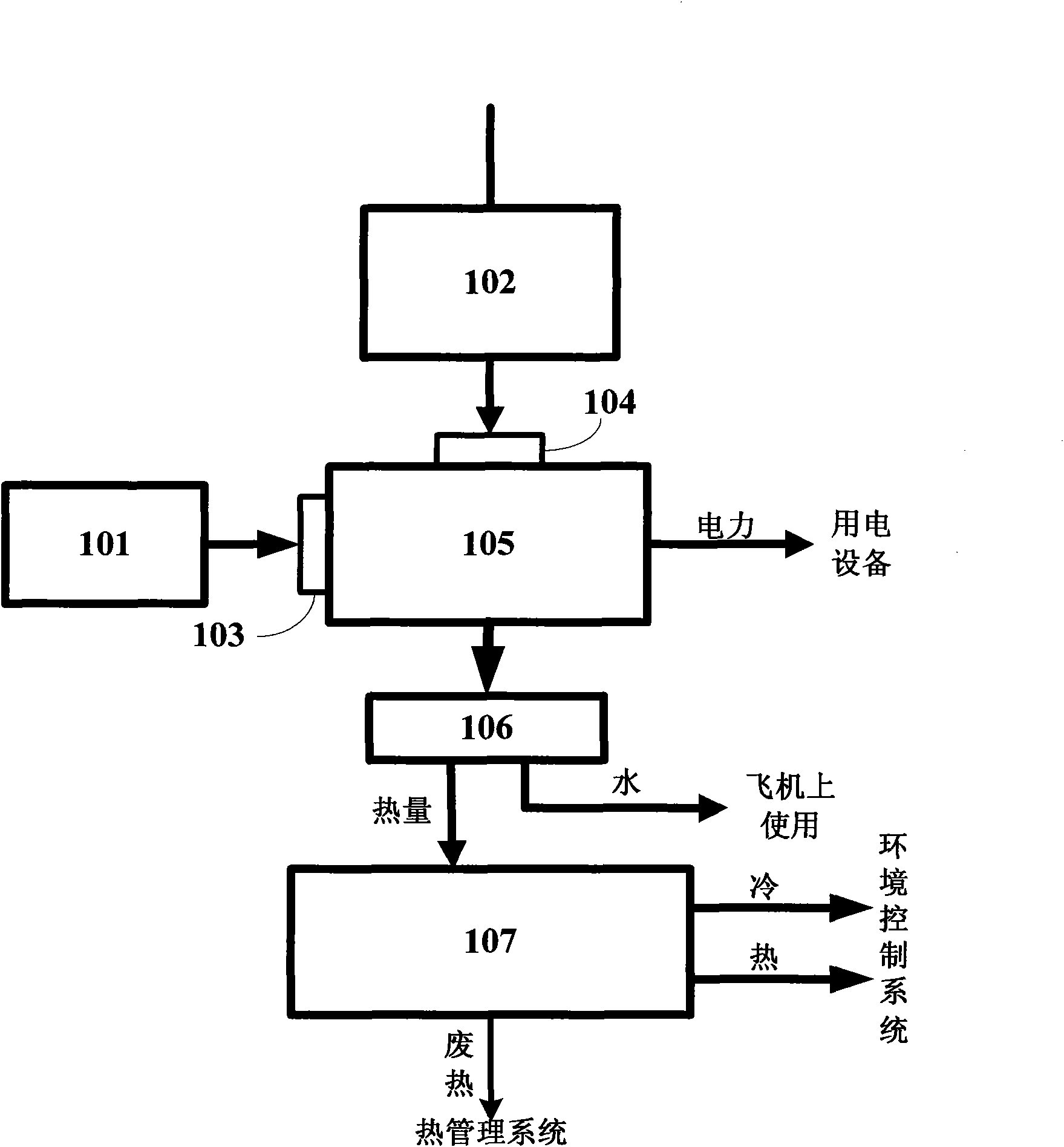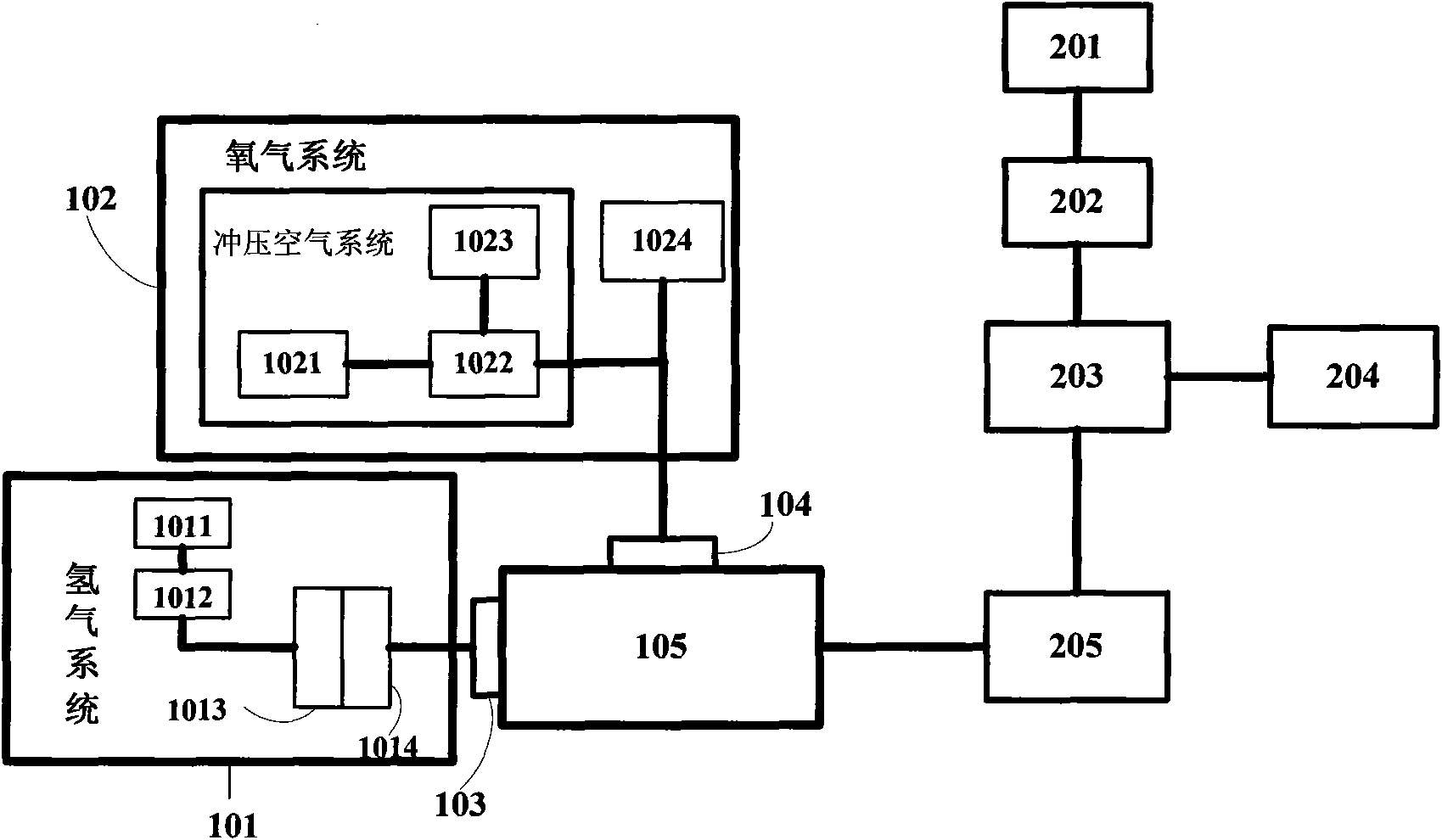Airborne combined cooling and heating system and method for all-electric aircraft
A technology of cogeneration of cooling, heating and power, aircraft, applied in the direction of machine operation, refrigeration and liquefaction, electrochemical generators, etc., can solve the problem of insufficient utilization of waste heat of power generation devices, low thermal economy of the system, and environmental control High energy consumption of system electric air conditioner
- Summary
- Abstract
- Description
- Claims
- Application Information
AI Technical Summary
Problems solved by technology
Method used
Image
Examples
Embodiment Construction
[0031] The airborne cooling, heating and power cogeneration system of the invention comprises a low-temperature proton exchange membrane fuel cell and a lithium bromide integrated membrane absorption waste heat air conditioner.
[0032] Fuel cells can efficiently and environmentally friendly convert the chemical energy stored in the fuel into electrical energy, and hydrogen is the best fuel for fuel cells.
[0033] A proton exchange membrane fuel cell (PEMFC) is a type of fuel cell, and the electrolyte of the proton exchange membrane fuel cell is composed of an ion-conducting polymer. The two sides of the electrolyte are electrodes composed of porous catalysts. The three-layer structure is tightly bonded together to form a very thin "cathode-electrolyte-anode" structure, which is called a three-in-one membrane electrode assembly (MEA). Usually multiple MEAs are connected in series by bipolar plates and used in battery stacks.
[0034] The polymer electrolyte of low-temperatur...
PUM
 Login to View More
Login to View More Abstract
Description
Claims
Application Information
 Login to View More
Login to View More - R&D
- Intellectual Property
- Life Sciences
- Materials
- Tech Scout
- Unparalleled Data Quality
- Higher Quality Content
- 60% Fewer Hallucinations
Browse by: Latest US Patents, China's latest patents, Technical Efficacy Thesaurus, Application Domain, Technology Topic, Popular Technical Reports.
© 2025 PatSnap. All rights reserved.Legal|Privacy policy|Modern Slavery Act Transparency Statement|Sitemap|About US| Contact US: help@patsnap.com



